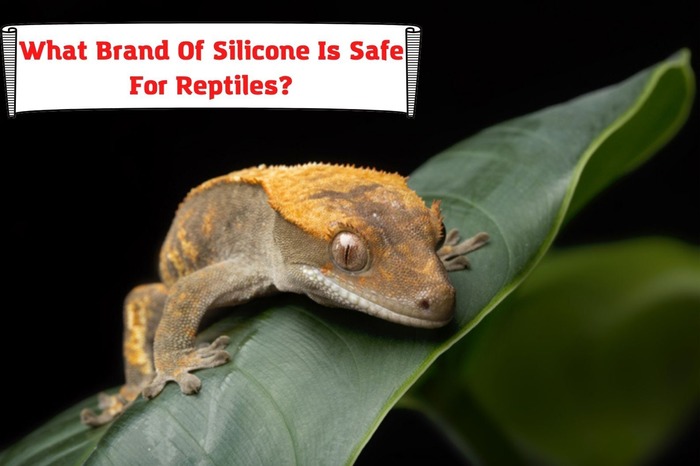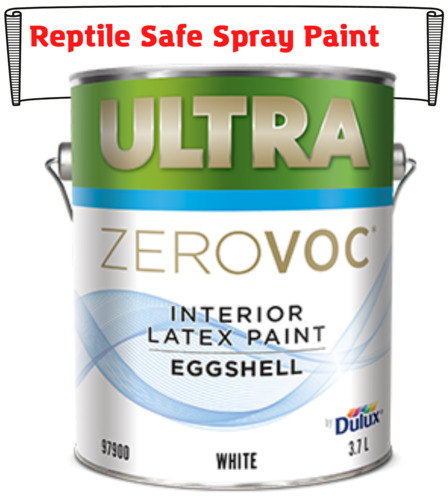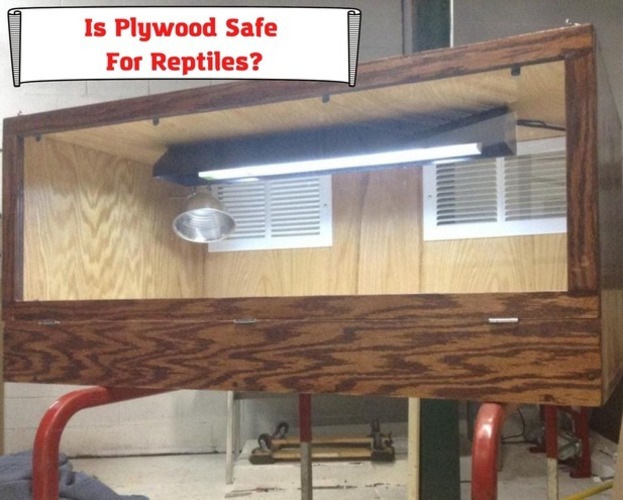The baking time of wood for reptile enclosures is crucial to the process efficiency.
Baking, a common practice to sterilize wood, needs adequate time to kill fungi, parasites, and microbes present in the wood.
The time needed for this process concludes the completion of sterilization.
The ideal time to bake an average-sized wood stick, that can fit into your oven, is 2 hours.

If the wood does not fit your oven, you need to use the other wood sterilization method called bleaching.
If the wood can fit into the oven, but the branches have a larger diameter of over 4 inches, you can bake it for 3 to 4 hours.
There is more to the science of baking the wood for reptile enclosures. If you want to know more about the baking period time and how it can affect the baking process, keep reading.
Safe Wood for Reptiles
Nobody wants to pay over $20 for a piece of stick.
If you can harvest the log from your backyard or into the woods, you can bake them to place and use safe wood in your pet’s terrarium.
If you recently entered the world of reptile petting, you must know how to disinfect and clean the woods in their enclosures.
The stick can still house insects and parasites that can harm your pet. Without proper sterilization, you may put your reptiles at risk because of molds, fungi, and bacteria inside your pet enclosures.
Safe wood helps your reptile prevent a range of health issues.
Some wood can be toxic for the reptiles, while some hardwood can be safe for them. Woods chemically treated or toxic can lead to health issues and respiratory problems for reptiles.
Also, woods chemically treated with fungicides and pesticides are hazardous for your pet.
With safe wood, you can rest assured that your reptiles can maintain a natural behavior without risking them to hazardous materials.
The Two Ways to Sterilize Wood for Reptile Enclosure
To remove these microbes on the wood, you can sterilize them before placing them into the enclosure.
You have two ways to disinfect the wood. Bake the wood if it fits into the oven. If it does not fit in the oven, soak it in the bleach.
Although you can bleach smaller logs, baking wood is considered minimally invasive. It preserves the wood’s integrity, and the process alone poses less risk for the reptiles.
Factors for Effective Baking of Wood
For effective wood baking, these factors work together to make it more efficient in providing safe wood.
1) Choosing the Right Type of Wood
Some woods are not appropriate for reptile enclosures.
For example, cedar is dangerous for reptiles. It contains aromatics or phenols that are toxic for reptiles. Like cedar, eucalyptus, and pine can be dangerous for reptiles.
At the same time, chemically treated wood and logs with thorns can be dangerous for reptiles.
Oaks, dogwood, and maples are safe wood types when they have not gone through chemical treatment.
The right type of wood lets the heat penetrate the wood easily, giving better access to hard-to-reach microbes present in the wood. Wood with lower moisture content helps decrease the needed time to dehydrate the wood.
The right type of wood offers durability and resistance to decay. The right wood type is more compatible with baking. Some woods can warp, crack, or char during baking.
Oaks, maple, and birch can withstand the oven temperature and avoid warping, cracking, or charring. But, you need to monitor them because wood is still flammable.
2) Wood preparation
Wood preparation removes contaminants, debris, and dirt on the wood before placing it in the oven.
Initial cleaning enhances the sterilization process. The process helps eliminate pathogens and microbes that thrive on the surface.
If the wood has been used in a different environment, it poses the risk of cross-contamination. Wood preparation helps prevent cross-contamination.
This process aids in the removal of fungi and mold that grew in the wood. And lastly, this process reduces the amount of chemicals in the wood.
3) Baking Time
Baking time must be sufficient to kill microbes, pests, and fungi inside the wood. This duration provides heat enough time to penetrate the wood, remove its moisture, and kill pathogens.
Insufficient baking time may still leave microorganisms in the wood.
While overbaking wood causes the wood to char and become brittle. The wood may lose its structural integrity, making it not suitable for reptile use.
4) The Baking Process
The baking process is pretty straightforward.
Preheat your oven to 250°F and bake the clean wood for 2 hours. Monitor your wood by checking it every 10 minutes.
If you do not set the right temperature and time or monitor the process, it can lead to failure. The baking may become inefficient in killing the microbes and bacteria present in the wood.
The Optimum Time to Bake Wood
For logs with small diameters of about 2 inches, you can bake the wood at a minimum of thirty minutes to two hours at 56°C or 132°F. Smaller sticks tend to heat up easier than larger sticks.
For sticks 2 to 4 inches thick, you can bake them at 250°F for 2 to 3 hours. These medium-sized logs may take longer to heat and penetrate the core.
For larger ones that can still fit into the oven, bake them at 300°F for three hours.
Check the wood every ten minutes to monitor and avoid causing fire. It takes 500°F to ignite the wood. The slow-baking process can potentially ignite the wood at this temperature.
How to Find Out if Your Wood is Thoroughly Baked?
- The wood should be dry to the touch. The drying process must leave little-to-no moisture in the wood. While there is no specified moisture content, you can use a moisture meter to see the humidity level of wood. Ideally, the wood should have around 6 to 8% moisture content. If there is still dampness on the wood surface, it must have not been dried thoroughly.
- The wood is considerably lighter than unbaked wood. Baking removes the moisture in wood, making it more lightweight.
- The color changes. Depending on the species, the wood color may get darker because of prolonged exposure to heat.
- The wood’s natural smell reduces. Because baking removes moisture, it also removes the volatile compounds that enhance the aroma of the wood.
Can I Bake the Wood for a Longer or Shorter Time?
No.
Overbaking will dry the wood excessively, making the wood brittle. This event can affect the durability of the wood, which may endanger your reptile when climbing. The log weakens, leading to cracking or warping.
Also, overbaking can char or burn the wood, posing a fire hazard or health hazard for your reptile.
On the other hand, insufficient drying will not complete the sterilization process. It wastes your effort because it retains moisture. The microbes, fungi, and bacteria continue to house on the wood, posing a danger to your reptiles.
Can I Turn the Temperature Higher to Fasten the Reduce Baking Time?
Baking should be a temperature-controlled process that slowly dries the wood and kills the bacteria and fungi present in the wood. Turning it to a higher temperature may reduce baking time, but it will not complete sterilization. Instead, it will cause uneven baked wood portions. The heat may not be able to penetrate the core of the wood while the surface dries excessively and even burn it during the process.
For this reason, you need to bake the wood within two hours with continuous monitoring.
The Importance of Monitoring the Baking Wood
When you monitor the wood, you help prevent wood ignition. You have control over the process, especially the temperature. You can avoid overbaking and underbaking.
Also, monitoring the wood ensures baking the wood evenly to the core of the wood. Monitoring the wood means also maintaining the quality of the wood, which is crucial for the well-being of your reptile.
And lastly, monitoring the wood ensures complete sterilization.
Cooling Time of Baked Wood
The wood needs enough time to cool down before placing them into the enclosure. Thicker woods will take a longer time to remove the heat. Also, you do not want to expose your reptile to a hot piece of wood. So be patient. Use gloves and place the wood on a cooling tray.
It may take an hour to several hours to cool the wood completely, depending on the thickness.
Let the wood cool on natural ventilation. Trying to speed up cooling by exposing them directly to fans or immersing them in water can warp or crack the wood because of sudden temperature changes.
Also, the presence of moisture in the wood affects drying time. Because the wood has been exposed to heat for longer, cooling it will take longer too. Remember that wood is an insulator and can store heat for an extended time.
If you have a thermal scanner, you can figure out if the wood has cooled down. If it reaches room temperature, the wood has reached a consistent temperature with its surrounding environment which is safe for your reptiles.
To Sum it Up
On average, you can bake wood within 2 hours. With constant monitoring, you can place a safe wood with quality and structural integrity that your reptile can enjoy hopping, climbing, or crawling into. Additionally, reaching the appropriate time completes the sterilization process and helps you become more confident about the natural habitat you set up for your beloved reptile.
- Pacman Frog Looks Deflated – What’s Wrong and What to Do? - August 7, 2023
- How to Put Snake Back in Cage after Feeding? Important Concerns - July 31, 2023
- Repta Boost: Instruction, Considerations, Ways to Use - July 24, 2023



